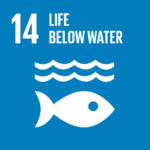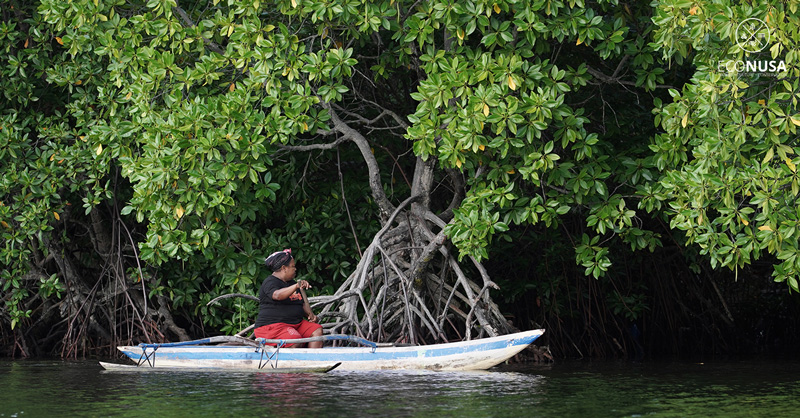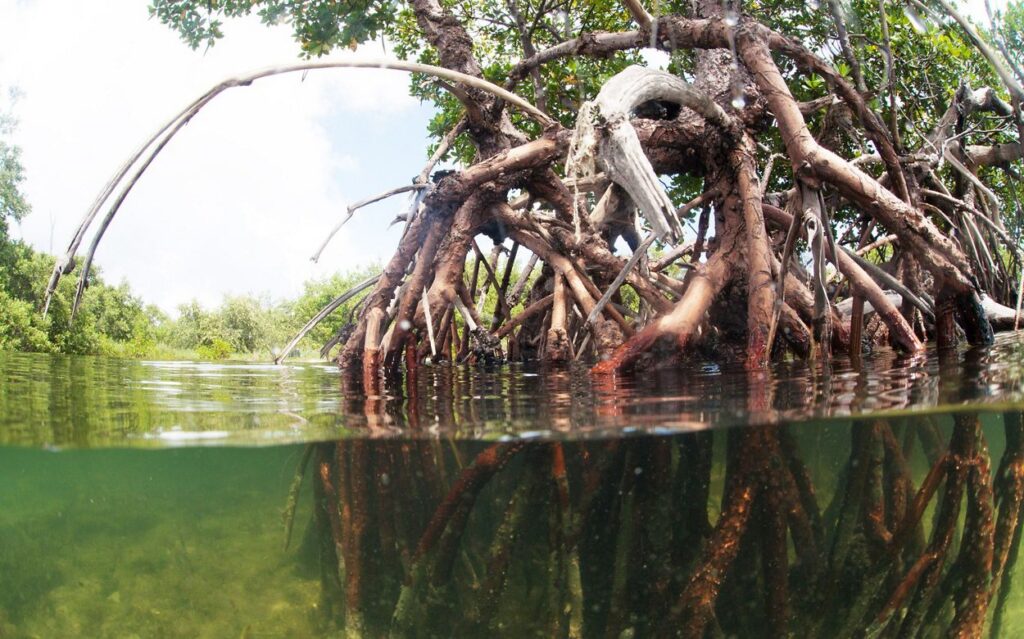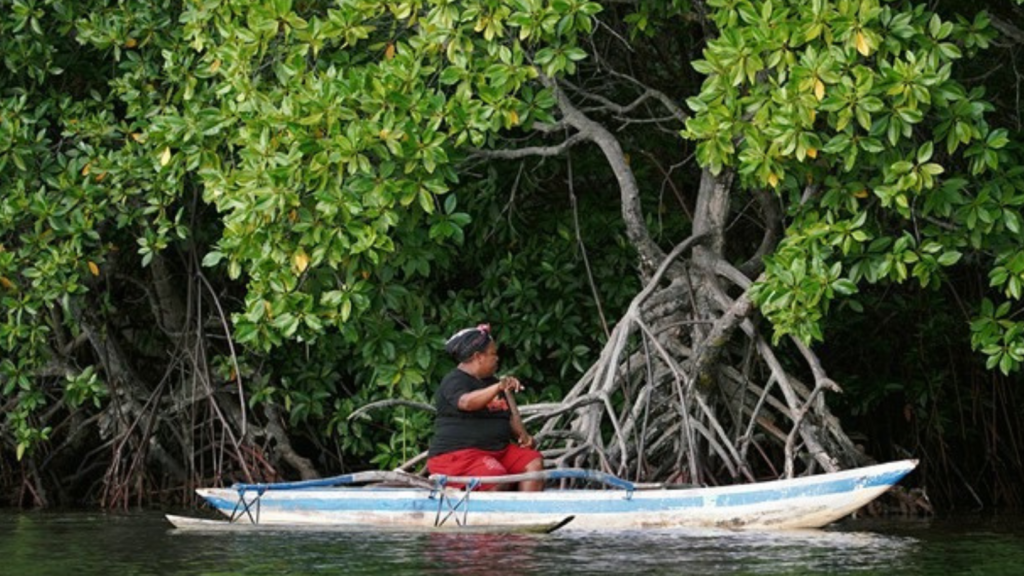Have you ever heard of Hutan Perempuan, also known as the Women’s Forest? Generations of women have harvested clams and exchanged stories here.
Mangroves are invaluable: They are the breeding and feeding grounds for fish and shellfish that many indigenous communities around Papua rely upon. Mangroves also trap sediment from land runoff so that coral reefs and seagrass aren’t smothered by silt, and they buffer coastal communities against the impact of king tides and storm surges caused by climate change. Yet mangroves are one of the most threatened ecosystems on the planet. They are cleared for housing, logging, and aquaculture and are over-harvested for timber and firewood. This harms the environment and people’s lives.
RELEVANT SUSTAINABLE GOALS




Tonotwiyat : the Tradition Of Visiting Mangrove Forest
The women of Enggros have a Tonowiyat tradition. Tonot means mangrove, while wiyat means invitation. Tonotwiyat is a tradition for women in Enggros Village to visit mangrove forests to search for clams. They call it bia in the local language. According to The Jakarta Post, this 8-hectare mangrove forest, which locals call the tonotwiyat (female forest), is located in the eastern part of Kampung Enggros, the oldest kampung in Jayapura.
Tonotwiyat has been carried out from generation to generation since ancient times. Nobody knows how the tradition of visiting female forest originated. Mama Yos carries on the family tradition started by his mother and grandmother. He said that this custom existed prior to the arrival of Christianity in the community.
Women have been visiting the forest for a long time, searching for food supplies such as bia (clams), shrimp, crabs, and fish. Collecting clams in the forest is special for local women. Before the women leave to collect clams, they huddle up and pledge to never leave each other’s side while in the forest, as they are supposed to travel in a group.
Men are banned from entering the forests while the women are collecting clams. Men are only allowed to enter the forest to collect wood when there are no women deemed to be the rightful authority of the forest. Enggros Kampung leader Origenes Meraudje said women were free to do anything they wanted in the forest because “they don’t have a place to hang out and share stories in the village.”
The women have faced increasing challenges from litter coming from the nearby cities. Enggros Kampung leader Origenes Meraudje told the outlet: “We find more plastic than clams nowadays. We are so sad.” She added: “Back in the day, we needed only half a day to fill up our boat [with clams]. But these days, we work the whole day but barely fill up half the boat.”
From 1967 until now, Youtefa Bay has lost more than 50% of the mangrove forest area, with a high level of damage. The shrinking of the mangrove area impacts the decrease in the number of fishery biota. Lecturer of Marine and Fishery Sciences from Cendrawasih University, John Dominggus Kalor, said that the pollution status in Youtefa Bay “has been a red light.” He considers one of the causes of the shrinking of the mangrove forest area is infrastructure development and the development of Youtefa Bay as a tourist destination.
Maria Meraudje added: “We feel free to do anything we want. We are happiest when we’re in the forests”.

Save The Mangroves, Save The World
Everyone knows that plants take carbon out of the air, thus acting as natural scrubbers for the atmosphere. However, few know that not all vegetation is created equal when it comes to sequestering carbon.
Coastal vegetation in mangroves, seagrass, and salt marsh grass beats out all other contenders, sucking up carbon much faster than terrestrial forest. In the form of “blue carbon,” this carbon can be stored in vast quantities within layers of peat going deep into the ground. Blue carbon is an exceptionally secure form of storage under most circumstances, but unfortunately, these ecosystems are increasingly vulnerable to coastal development. Here carbon capacity becomes a double-edged sword as the carbon is dug up and flies into the atmosphere, contributing to climate change.
Back in the day, we needed only half a day to fill up our boat [with clams]. But these days, we work the whole day but barely fill up half the boat. We feel free to do anything we want. We are happiest when we're in the forests.
Maria Meraudje (Enggros Villager)
Women, specially Indigenous and rural women, are more vulnerable to climate change and land use change such as deforestation, and that addressing gender inequality is central to effective climate mitigation and adaptation. Women’s involvement in conservation, economic development and decision-making create more prosperous and healthy futures for themselves, their communities and their environment.
Lead image courtesy of EcoNusa Foundation (Moch.Fikri)
You may also be interested in :
Homecoming : A Short Film On Indigenous Youth Driving Sustainable Rural Development



